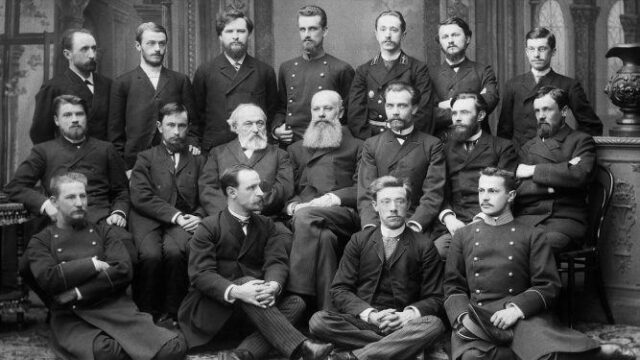The Man Crisis and ‘Iron John’ at 35

This year marks the 35th anniversary of the publication of poet Robert Bly’s massive bestseller and ’90s cultural phenomenon, Iron John: A Book About Men. Although it’s not mentioned much these days, Iron John deserves a re-evaluation in the face of today’s apparent man crisis. According to reports, men in 2025 are lonely, isolated, and suicidal. They’ve lost their purpose in life. As a recent report in the Stanford Review puts it this way:
Young men today are three times more likely to overdose, four times more likely to commit suicide, and a staggering 14 times more likely to be incarcerated than their female peers. 98% of all mass shooters are male. Violence, addiction, and self-harm all represent a desperate cry for help from a generation of struggling young men.
The root causes of this crisis are deeply ingrained within our societal structures. First and foremost, the rise of single-parent households has disproportionately impacted young men. The United States’ proliferation of single-parent families, up from 9% in 1960 to 37% today, and absentee fathers have no doubt played an increasingly important role in the inferior outcomes of many young males.
Sociologist Richard Reeves has even opened up a think tank, the American Institute for Boys and Men, to study the problem.
So now, three decades on, perhaps it’s time to look back on Bly’s Iron John and see if we can tease out any solutions there.
Something people forget, and even failed to understand at the time, is that although Iron John is not a liberal book that doesn’t mean it’s conservative. Still, one can imagine that the insights it has would appeal more easily to Joe Rogan than Ezra Klein.
In the early 1990s, when Iron John was riding the bestseller lists I was working at a magazine that explored Jungian psychology and the New Age movement. Bly was one of the central figures at the time, and I remember that many of the “in therapy” men and New Agey women who subscribed and came to our annual conference were critical of Bly. At one conference Bly asked men to re-enact a scene from The Odyssey, in which Odysseus is told to lift his sword as he sails towards Circe, “the symbol of matriarchal energy.”
Journalist Tom Butler-Bowden described what happened next:
Peace-loving men were unable to carry out the lifting of the sword, so fixed were they on the idea of not hurting anyone. These were men who had come of age during the Vietnam War, and they wanted nothing to do with a manhood which, to feel its aliveness, required an enemy. Instead of the single-mindedness of the 1950s male, they had a receptivity to different viewpoints and agendas. The world is a much better place for these “soft males”—they are lovely human beings, Bly admits—but such harmony-minded men are also distinguished by their unhappiness, caused by passivity. Bly tried to teach these men that flashing a sword didn’t necessarily mean you were a warmonger, but that you could show “a joyful decisiveness.”
The story Bly uses as the foundation for his study, Iron John, has been around for thousands of years. A hunter answers a challenge from the king to go to a part of the forest from which men seldom return. At the bottom of a lake the hunter discovers a hairy Wild Man, who is taken back to the town and imprisoned. The Wild Man is discovered by the king’s son, who releases him from the cage. The Wild Man represents primal male energy.
Bly, a poet, was precise in his use of language. “Bly makes the important distinction between the Wild Man and the savage man,” Butler-Bowden observes.
The savage is the type who has wrecked the environment, abused women and so on, his inner desperation having been pushed out onto the world as a disregard or hatred of others. The Wild Man has been prepared to examine where it is he hurts; because of this he is more like a Zen priest or a shaman than a savage. The Wild Man is masculinity’s highest expression, the savage man its lowest.
Bly argued that men need to be wounded to embrace their full power, and that “warrior energy, if not honored or channelled, ends up expressed as teen gang warfare, wife beating, paedophilia, and feelings of shame.” Bly quotes Carl Jung, who wrote that American marriages were ‘the saddest around because the man reserved all his fighting for the office.”
Appreciation of pain and sorrow, Bly concluded, is as vital to a man’s potentiality as having the ability to use his imagination to soar through the air. To put it in simpler terms, the experience of bleeding on a sports field must be valued as much as mastering a video game—in fact it should be seen as even more important.
Today, Bly’s observations about the severe dysfunction that happens to men when they have not been properly initiated into manhood seem even more accurate and depressing. On television, in books and in movies, and especially in politics, men who are not docile are derided as delusional, weak, crazy and dangerous. Our culture has tried to eradicate what Bly calls “Zeus energy”—a male energy “which encompasses intelligence, robust health, compassionate decisiveness, good will, generous leadership.”
This is probably why in 2020 a snarky essay on the BBC website put Iron John on its list of “cult books that lost their cool.” Iron John, Hephiziah Anderson writes, is “a consciousness-raising polemic based on a German folk tale,” that according to her did little more than inspire:
a generation of middle-aged men to braid leaf crowns and circle dance bare-chested in the woods. As with so many books on this list, its flaws have been magnified by the passage of time. Utterly devoid of irony and blinkered by his orientation as a straight white bloke, its lute-strumming (oh yes) author is just too easy to send up. And then there are the honking great phallocentric metaphors that he just can’t let go of. We may well need to redefine masculinity, but re-wilding doesn’t seem the optimal way of going about it.
Yet if not Iron John, what is the way out of the male crisis? Certainly not what the Democrats are attempting, which is spending $20 million to study Joe Rogan and sending butch lesbians to attempt to speak at fraternities.
The Democrats don’t seem to realize that men, especially younger men who were the objects of an educational experiment rejecting natural masculinity, overwhelmingly reject the sensitive male ethos of the 1960s.
Bly explains this by exploring the anti-war feminism of Vietnam era, when there was a bumper sticker that read WOMEN SAY YES TO MEN WHO SAY NO—i.e., to men who refuse the draft. While Bly is highly complementary of the women’s movement on the one hand, he is nuanced in both his praise and criticism. —He acknowledges that one problem before feminism was that “the Fifties man was supposed to like football, be aggressive, stick up for the United States, never cry, and always provide.” This resulted in “a psyche that lacked flow.” In the 1960s men called for “harder” women who were more sexually free and aggressive about their careers, and women called for men who were more in touch with their feelings—more “receptive.”
But in the “receptive man” favored in the 1960s—and even more so today—something even more fundamental is missing. Bly writes: “They had learned to be receptive, but receptivity wasn’t enough to carry their marriages through troubled times. In every relationship, something fierce is needed once and a while: both the man and the woman need to have it. But at the point when it was needed, often the man came up short.”
Bly then alludes to The Odyssey when Hermes tells Odysseus that when he, Odysseus, approaches Circe, the goddess of magic and a witch, Odysseus is supposed to lift his sword. Many modern men, Bly argued, can’t even lift their swords. Again, precision is important with Bly: “Showing a sword doesn’t necessarily mean fighting. It can also suggest a joyful decisiveness.”
Bly also explores how the transformation of the Industrial Revolution into the Digital Revolution (then in its earliest phases) hadn’t done anything to bring fathers and sons closer—not psychically and not physically. Fathers, while they labored less vigorously, still worked miles from home, and when they got home they were often cowed into being “receptive males” by their enlightened feminist wives. But, as Bly noted, “it’s not working.” Bly observed that many of the angry young political activists of the 1960s were obsessed with the activity of taking over campus buildings and fighting in the streets because they were searching for their absent fathers—something equally true of today’s Antifa activists. People who are not secure in their place at home are angry and often show it.
I remember that when Iron John became a phenomenon in the 1990s every single actor, journalist, and performance artist I knew was eager to create a parody of it and the so-called men’s movement. Those people have now either lost themselves or are living passive lives where they are ordered around by their wives and raising dull sons.
https://chroniclesmagazine.org/web/the-man-crisis-and-iron-john-at-35/
